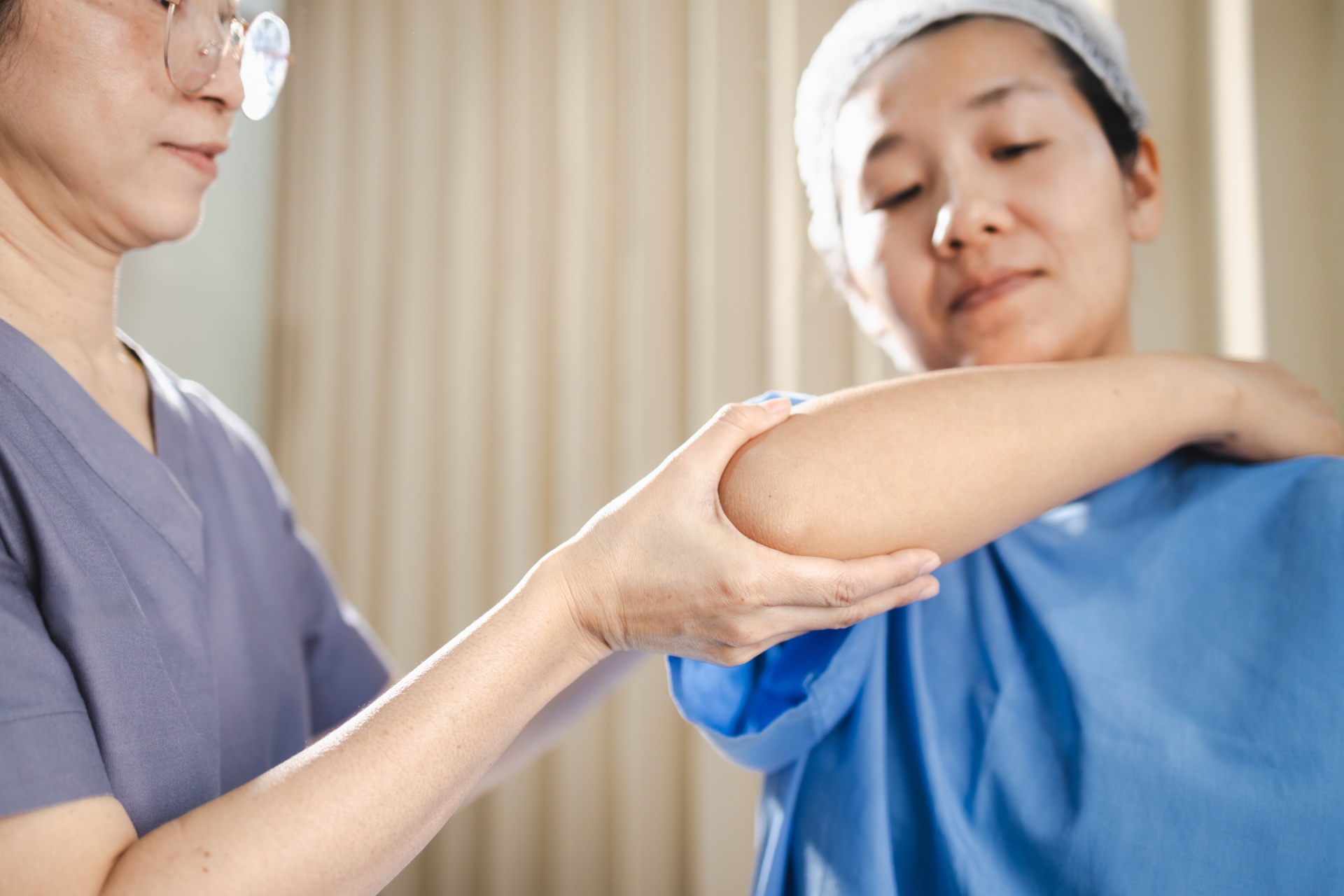Epicondylitis is a painful condition that can seriously interfere with daily activities. Whether you are an athlete or someone with a job involving repetitive movements, understanding this condition is the first step toward lasting relief. This article explores the two primary forms of epicondylitis: lateral (tennis elbow) and medial (golfer’s elbow).
What Is Epicondylitis?
Epicondylitis refers to inflammation of the tendons that attach the forearm muscles to the elbow. This inflammation causes tendon tenderness and pain around the elbow joint.
It is usually the result of overuse of the elbow and tendons involved in sports (such as golf or tennis) or professional activities requiring repeated gripping and lifting.
The two main types are:
- Lateral epicondylitis (tennis elbow): inflammation of the tendons attaching forearm muscles to the outer (lateral) side of the elbow, usually involving the extensor carpi radialis brevis muscle (responsible for wrist and finger extension). Pain is felt on the outside of the elbow.
- Medial epicondylitis (golfer’s elbow): inflammation of the tendons attaching forearm muscles to the inner (medial) side of the elbow, often involving the flexor carpi radialis muscle (responsible for wrist flexion and hand abduction). Pain is felt on the inside of the elbow.
Causes of Epicondylitis
Most common in people aged 30–50, epicondylitis results from repetitive and forceful forearm/wrist movements:
- Lateral epicondylitis: caused by repetitive extension of the wrist/elbow. The tendon rubs against the bony structures of the elbow, creating microtears and inflammation. Sports like tennis, and jobs like plumbing, painting, carpentry, or butchery, increase risk.
- Medial epicondylitis: caused by repeated wrist flexion or forearm pronation, as in swinging a golf club or throwing a baseball. Tennis can also cause medial epicondylitis.
Typically, the dominant arm is affected, though both elbows may be involved in activities requiring bilateral effort.

Symptoms
Symptoms often develop gradually over weeks or months:
- Pain or burning on the inner or outer elbow.
- Weak grip strength and difficulty holding or lifting objects.
- Hand tremors or shakiness.
- Occasionally, numbness or tingling radiating into the fingers.
- Elbow stiffness.
- Pain that worsens during activity, stressing the tendons.
Diagnosis
A physiotherapist will review medical history and perform a physical exam. For example, you may be asked to place your forearm on a table, palm up, and flex your wrist against resistance, triggering pain at the elbow if epicondylitis is present.
Additional tests may be used to rule out other conditions:
- X-rays/MRI: to exclude arthritis or cervical disc herniations.
- EMG (electromyography): to rule out nerve compression causing similar symptoms.
Treatment Options
Treatment aims to reduce pain and inflammation, restore mobility, and strengthen the arm.
Conservative (non-surgical) treatments
- Rest and activity modification: reduce repetitive wrist/elbow movements and heavy lifting.
- Medications: NSAIDs (ibuprofen, naproxen) for pain and inflammation.
- Bracing: forearm straps or braces support tendons and reduce strain.
- How to wear the M-Brace 132 & 139 orthosis: Watch here
- Ice application: helps reduce inflammation.
- Steroid injections provide short-term relief by targeting the affected area with cortisone.
- Physiotherapy:
- Strengthening exercises for forearm muscles.
- Muscle stimulation techniques.
- Ice massage to reduce inflammation.
- Stretching and progressive strengthening of injured tendons and muscles.
- Elbow pain (Epicondylitis)? Try this: Watch here
Surgical treatments
- Recommended if conservative measures fail.
- This procedure involves removing damaged tendon/muscle tissue and reattaching healthy portions to the bone.
- It can be performed via open surgery or arthroscopy (minimally invasive).
- Post-surgery, strengthening and flexibility exercises typically begin after ~2 months, and return to sports is usually possible in 4–6 months.
Recovery Time
- With conservative care, recovery usually takes 1–3 months.
- With surgery, strengthening begins after 2 months; return to full activity in 4–6 months.
- Early treatment is critical for better outcomes and to prevent complications such as tendon rupture or shoulder stiffness.

Conclusion
Quick and appropriate treatment is essential to prevent worsening symptoms and ensure full recovery from epicondylitis. By consulting orthopaedic specialists, physiotherapists, and sports medicine professionals, you can receive an accurate diagnosis and a tailored treatment plan for lasting relief.

Recent Comments